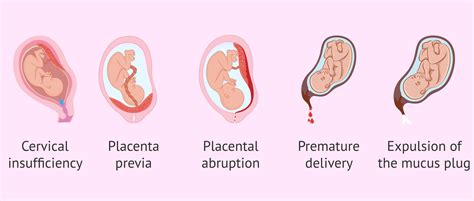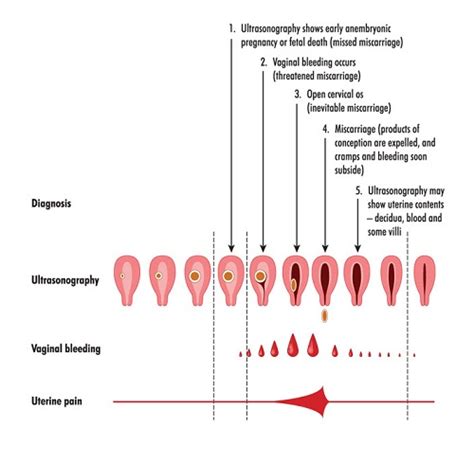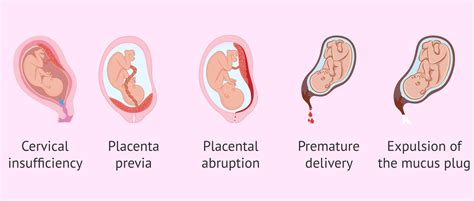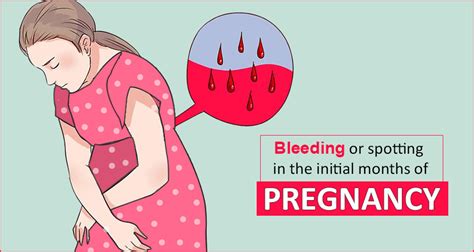Intro
Learn about light spotting during pregnancy, its causes, and symptoms. Understand vaginal bleeding, implantation spotting, and hormonal changes to ensure a healthy pregnancy, recognizing signs of miscarriage or ectopic pregnancy.
Light spotting during pregnancy is a common phenomenon that can cause concern among expectant mothers. It is essential to understand the causes, symptoms, and implications of light spotting to ensure a healthy pregnancy. Spotting, in general, refers to light bleeding or discharge from the vagina, which can be alarming, especially during pregnancy. However, in most cases, light spotting is a normal and harmless occurrence.
Pregnancy is a complex and delicate process, and the body undergoes numerous changes to support the growth of the fetus. One of these changes is the increased blood flow to the uterus, which can cause light spotting. Additionally, the cervix and vagina become more sensitive during pregnancy, leading to increased discharge and occasional light bleeding. It is crucial to differentiate between normal light spotting and abnormal bleeding, which can be a sign of an underlying issue.
The importance of understanding light spotting during pregnancy cannot be overstated. Expectant mothers who experience light spotting may feel anxious or worried, which can negatively impact their mental and emotional well-being. By educating themselves about the causes and implications of light spotting, women can better manage their health and make informed decisions about their pregnancy care. Furthermore, understanding light spotting can help women identify potential complications early on, ensuring timely medical attention and a healthy outcome for both mother and baby.
Causes of Light Spotting During Pregnancy

Light spotting during pregnancy can be caused by various factors, including hormonal changes, implantation, and cervical sensitivity. Hormonal fluctuations, particularly the increase in estrogen and progesterone, can cause the uterine lining to become thicker and more vascular, leading to light bleeding. Implantation, which occurs when the fertilized egg attaches to the uterine lining, can also cause light spotting. Additionally, the cervix and vagina become more sensitive during pregnancy, leading to increased discharge and occasional light bleeding.
Other causes of light spotting during pregnancy include infection, trauma, and miscarriage. Infections, such as urinary tract infections or yeast infections, can cause inflammation and bleeding. Trauma, such as a fall or a blow to the abdomen, can also cause light spotting. In some cases, light spotting can be a sign of a miscarriage, especially if it is accompanied by other symptoms such as cramping, back pain, or heavy bleeding.
Types of Light Spotting During Pregnancy
There are several types of light spotting that can occur during pregnancy, including implantation spotting, ovulation spotting, and decidual spotting. Implantation spotting occurs when the fertilized egg attaches to the uterine lining, causing light bleeding or discharge. Ovulation spotting occurs when the ovary releases an egg, causing light bleeding or discharge. Decidual spotting occurs when the uterine lining sheds, causing light bleeding or discharge.Symptoms of Light Spotting During Pregnancy

The symptoms of light spotting during pregnancy can vary depending on the underlying cause. In most cases, light spotting is characterized by light bleeding or discharge, which can be pink, brown, or white. The bleeding or discharge may be constant or intermittent, and it may be accompanied by other symptoms such as cramping, back pain, or breast tenderness.
Other symptoms of light spotting during pregnancy include increased discharge, cervical mucus, and pelvic pressure. Increased discharge can be a sign of hormonal changes or infection, while cervical mucus can be a sign of implantation or ovulation. Pelvic pressure can be a sign of the uterus expanding or the baby moving.
Diagnosis and Treatment of Light Spotting During Pregnancy
The diagnosis and treatment of light spotting during pregnancy depend on the underlying cause. In most cases, light spotting is diagnosed through a physical exam, medical history, and laboratory tests. The physical exam may include a pelvic exam, while the medical history may include questions about the woman's menstrual cycle, sexual activity, and medical conditions. Laboratory tests may include blood tests, urine tests, or imaging tests such as ultrasound.Treatment for light spotting during pregnancy depends on the underlying cause. In most cases, treatment is not necessary, and the light spotting resolves on its own. However, if the light spotting is caused by an underlying condition such as infection or trauma, treatment may be necessary. Treatment may include antibiotics, pain medication, or bed rest.
Risk Factors for Light Spotting During Pregnancy

There are several risk factors for light spotting during pregnancy, including age, medical conditions, and lifestyle factors. Women over 35 years old are at a higher risk of light spotting due to hormonal changes and decreased fertility. Medical conditions such as diabetes, high blood pressure, and thyroid disorders can also increase the risk of light spotting.
Lifestyle factors such as smoking, alcohol consumption, and caffeine intake can also increase the risk of light spotting. Smoking can cause decreased blood flow to the uterus, while alcohol consumption can cause hormonal changes and decreased fertility. Caffeine intake can also cause hormonal changes and decreased fertility.
Prevention and Management of Light Spotting During Pregnancy
Prevention and management of light spotting during pregnancy depend on the underlying cause. In most cases, prevention and management involve maintaining a healthy lifestyle, including a balanced diet, regular exercise, and stress management. A balanced diet rich in fruits, vegetables, and whole grains can help maintain hormonal balance and support fetal growth.Regular exercise, such as walking or swimming, can help maintain blood flow and reduce stress. Stress management techniques, such as meditation or deep breathing, can help reduce anxiety and promote relaxation. Additionally, women can manage light spotting by wearing panty liners or pads, avoiding heavy lifting or bending, and getting plenty of rest.
Complications of Light Spotting During Pregnancy

There are several complications of light spotting during pregnancy, including miscarriage, preterm labor, and low birth weight. Miscarriage is a common complication of light spotting, especially if it is accompanied by other symptoms such as cramping, back pain, or heavy bleeding. Preterm labor is another complication of light spotting, especially if it is caused by an underlying condition such as infection or trauma.
Low birth weight is another complication of light spotting, especially if it is caused by an underlying condition such as placental insufficiency or fetal growth restriction. Placental insufficiency occurs when the placenta does not function properly, causing decreased blood flow and nutrient delivery to the fetus. Fetal growth restriction occurs when the fetus does not grow at a normal rate, causing low birth weight and other complications.
When to Seek Medical Attention for Light Spotting During Pregnancy
Women who experience light spotting during pregnancy should seek medical attention if they experience other symptoms such as heavy bleeding, cramping, or back pain. Heavy bleeding can be a sign of a miscarriage or other underlying condition, while cramping and back pain can be a sign of preterm labor or other complications.Women who experience light spotting during pregnancy should also seek medical attention if they have a history of miscarriage, preterm labor, or other complications. A history of miscarriage or preterm labor can increase the risk of complications, and women should be closely monitored by their healthcare provider.
Conclusion and Final Thoughts

In conclusion, light spotting during pregnancy is a common phenomenon that can cause concern among expectant mothers. However, in most cases, light spotting is a normal and harmless occurrence. By understanding the causes, symptoms, and implications of light spotting, women can better manage their health and make informed decisions about their pregnancy care.
It is essential for women to seek medical attention if they experience other symptoms such as heavy bleeding, cramping, or back pain. Women who have a history of miscarriage, preterm labor, or other complications should also be closely monitored by their healthcare provider. By prioritizing their health and seeking medical attention when necessary, women can ensure a healthy pregnancy and a positive outcome for both mother and baby.
What is light spotting during pregnancy?
+Light spotting during pregnancy refers to light bleeding or discharge from the vagina, which can be caused by hormonal changes, implantation, or cervical sensitivity.
Is light spotting during pregnancy normal?
+Yes, light spotting during pregnancy is normal in most cases. However, it is essential to seek medical attention if you experience other symptoms such as heavy bleeding, cramping, or back pain.
What are the risk factors for light spotting during pregnancy?
+Risk factors for light spotting during pregnancy include age, medical conditions, and lifestyle factors such as smoking, alcohol consumption, and caffeine intake.
How can I prevent and manage light spotting during pregnancy?
+Prevention and management of light spotting during pregnancy involve maintaining a healthy lifestyle, including a balanced diet, regular exercise, and stress management. It is also essential to seek medical attention if you experience other symptoms such as heavy bleeding, cramping, or back pain.
What are the complications of light spotting during pregnancy?
+Complications of light spotting during pregnancy include miscarriage, preterm labor, and low birth weight. It is essential to seek medical attention if you experience other symptoms such as heavy bleeding, cramping, or back pain.
We hope this article has provided you with valuable information about light spotting during pregnancy. If you have any further questions or concerns, please do not hesitate to comment below or share this article with your friends and family. Remember, prioritizing your health and seeking medical attention when necessary is essential for a healthy pregnancy and a positive outcome for both mother and baby.
